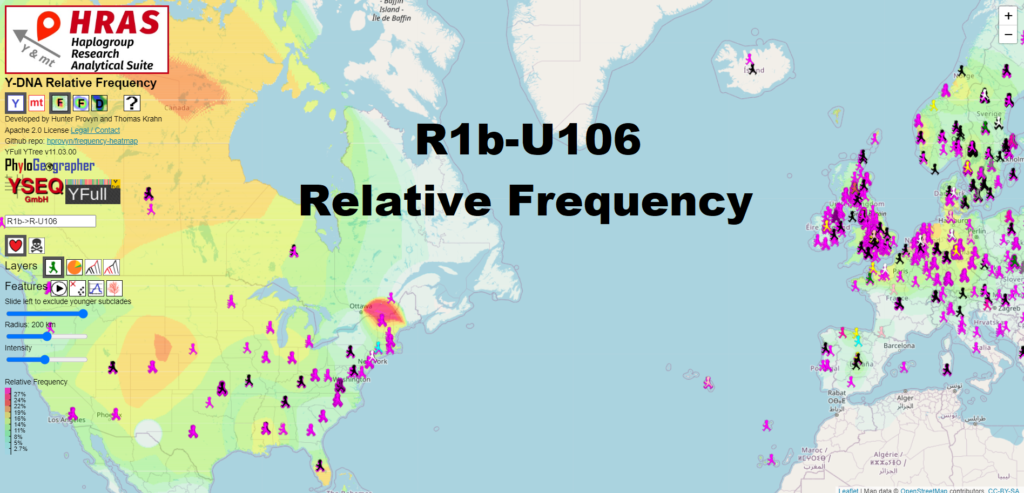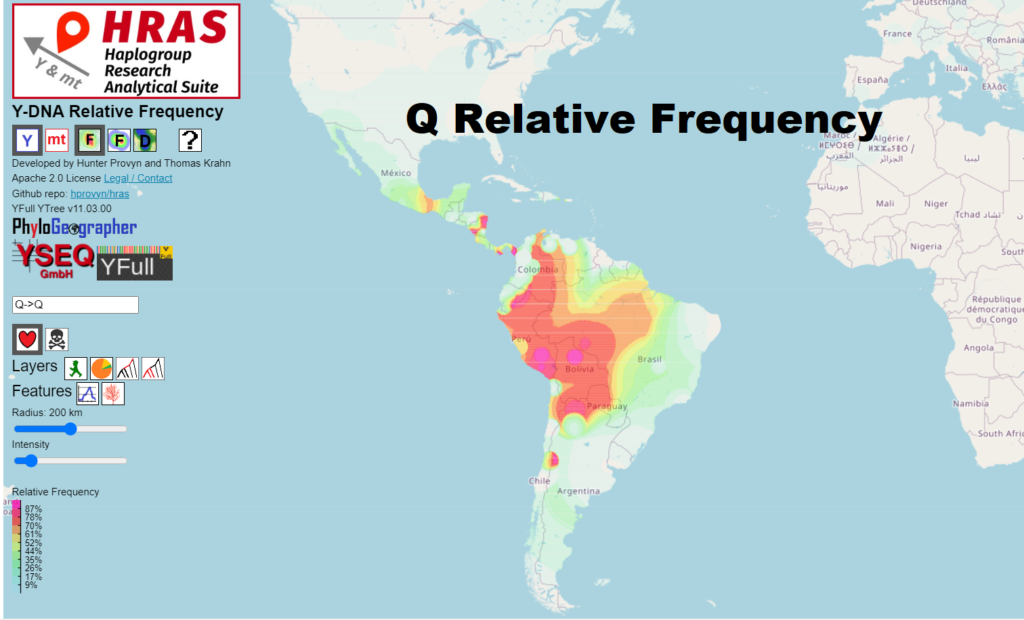43233 samples
From 802 to 813 ancient Y-DNA samples
Legacy Phylogeographer heatmap URLs now redirect to HRAS (Haplogroup Research Analytical Suite) hosted on YSEQ.
Y DNA Samples From New World and Australia / Oceania no longer filtered
19 New Regional Codes
AZ-GOR Azerbaijan (Goranboy) Q-BZ324CO-NAR Colombia (Nariño) R-Y46693
CY-03 Cyprus (Lárnaka) E-BY7700*
DO-21 Dominican Republic (San Cristóbal) J-FTC45736
DZ-08 Algeria (Béchar) J-Y265082*
GB-CAY United Kingdom (Caerphilly; Caerffili) I-FT28873
GY-DE Guyana (Demerara-Mahaica) E-PH1490
HU-BA Hungary (Baranya) I-BY194708
IR-19 Iran (Gīlān) R-PH4902*
KR-29 Korea, South (Gwangju Gwang’yeogsi) O-FGC54474*
LC-05 Saint Lucia (Dennery) R-FGC30220
LV-061 Latvia (Mālpils novads) R-FGC52391
MA-ASZ Morocco (Assa-Zag) E-Y196647*
MD-SD Moldova (Șoldănești) I-Y141127*
ME-05 Montenegro (Budva) I-Z16983*
MK-209 Macedonia (Пробиштип) R-Y125049*
RO-DB Romania (Dâmbovița) R-FTA65546*
TH-34 Thailand (Ubon Ratchathani) O-F19221*
VN-64 Vietnam (Ha Noi, thu do) O-F17046
Notes on Some New Geographic Codes
Béchar Province, Algeria is the second least-densely populated province in Algeria, named after its capital Béchar. This could explain why it is only now showing up on the YFull tree for the first time.
Baranya County, Hungary has the largest number of minorities in Hungary (more than twice the country average), providing home to 34% of the German minority the so-called Danube Swabians, and 32% of the Southern Slav minorities in Hungary.
Only a few people can speak the old Stiffolerisch Schvovish dialect of the Roman Catholic subgroup of the so-called Danube Swabians. Also a salami is named after these people. – Wikipedia
Interesting claims on wikipedia regarding the Y-DNA and mtDNA of Gilaks whose male lines supposedly originated mostly in the Caucasus while female lines mostly resemble those elsewhere in Iran. I am reading about this ethnic group and claim for the first time and have not investigated the claims myself.
The paper, Nasidze, Ivan; Quinque, Dominique; Rahmani, Manijeh; Alemohamad, Seyed Ali; Stoneking, Mark (2006), is quite old, published back when our knowledge of the male and female line trees was very primitive. So I doubt that this paper alone would be able to provide a fine-grained analysis regarding the timing of past migrations.
There is almost no information on Wikipedia for the south-easternmost province of Morocco, Assa-Zag province. Anyone who is a contributor to Wikipedia, here is your chance! I cannot easily find the area of the province but it appears by visual inspection to fit or nearly fit within a 100 km by 100 km square, and for heatmap computation purposes, I only track the areas of regional codes greater than 10,000 sq. km. So I do not need to know the area at this time.
In the 16th–18th centuries, continued economic development (trade, crafts), cultural (build churches, monasteries) and has been a marked increase in the population. Since late 18th and early 19th century, the region’s economic decay occurs as a result of the constant wars led by Poland, the Ottoman Empire and Russian Empire for influence in the region. – Wikepedia
Even now the area suffers from the lingering effects of the frozen conflict of the Russian occupation of Transnistria.
Montenegro is interesting for me because many lineages of my own male line J2b-L283 diversified in the western and perhaps central Balkans in the Bronze Age. Budva municipality lies along the southern coast of Montenegro. The western Adriatic coast and Cetina River of modern Croatia have the oldest ancient samples of the Cetina Culture in Europe and the majority of these most ancient Cetina Culture samples are J2b-L283.
In 2011, it had a population of 518,745 and the population density was 127/km2. It is one of the most densely populated counties in Romania.
The county is named after the Dâmbovița River, which is a name of Slavic origin, derived from Дъб, dâmb, meaning “oak”, as it once flowed through the oak forests of the Wallachian Plain. – Wikipedia
Y DNA Samples From New World and Australia / Oceania no longer filtered
Previously, PhyloGeographer employed logic to filter out New World samples to avoid complications for calculating theoretical approximate migration paths for Old World haplogroups. The main complication is that the average of locations between the Americas and Europe or Africa is somewhere in the Atlantic Ocean.
Now users have the option in HRAS to designate whatever countries they desire as outliers via the Manage Outliers control. The centroids will be immediately recomputed.
Now you can see the relative frequency and diversity maps of Y-DNA haplogroups in the New World and Australia / Oceania for all haplogroups on HRAS.

